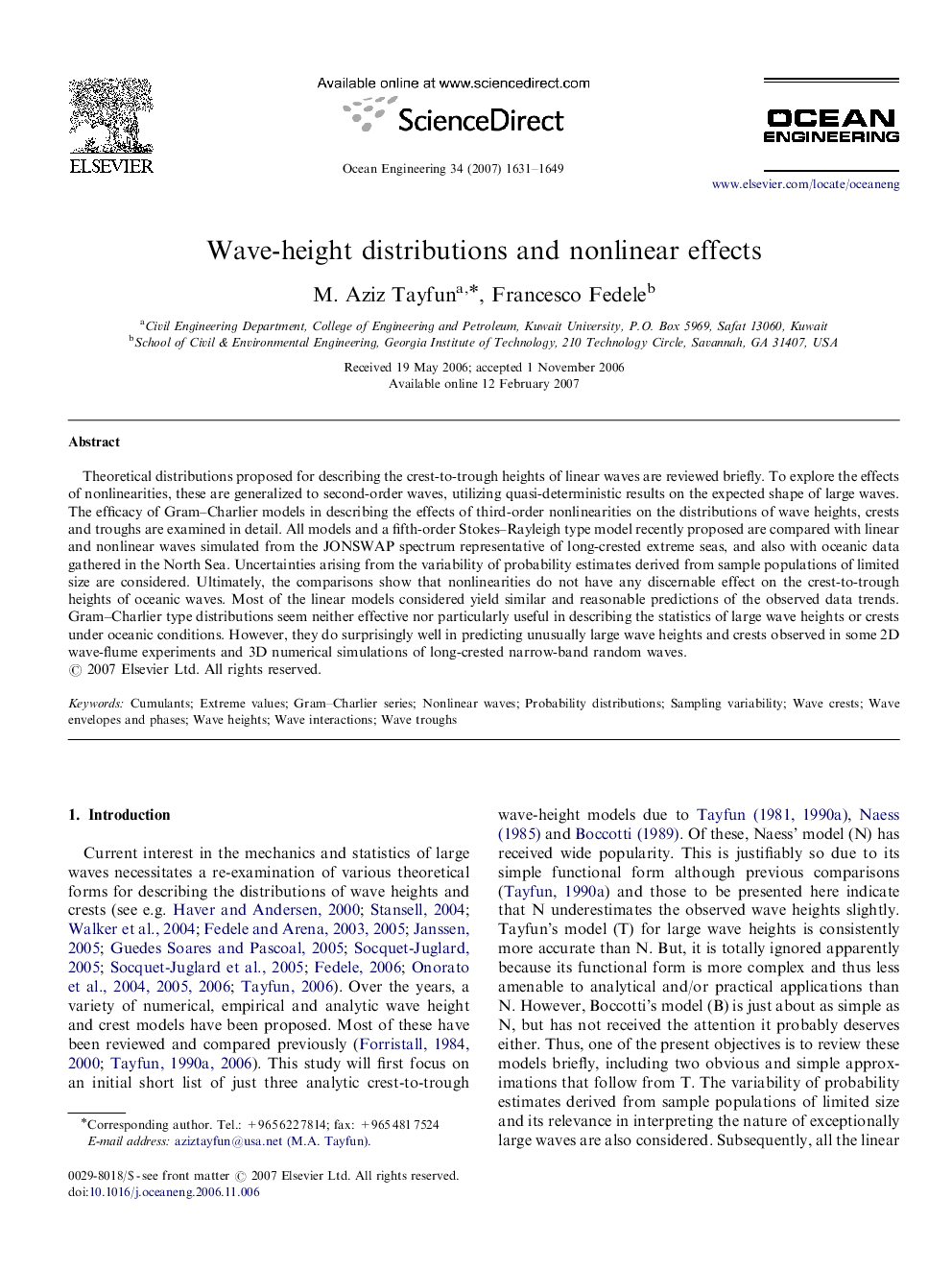| Article ID | Journal | Published Year | Pages | File Type |
|---|---|---|---|---|
| 1727023 | Ocean Engineering | 2007 | 19 Pages |
Theoretical distributions proposed for describing the crest-to-trough heights of linear waves are reviewed briefly. To explore the effects of nonlinearities, these are generalized to second-order waves, utilizing quasi-deterministic results on the expected shape of large waves. The efficacy of Gram–Charlier models in describing the effects of third-order nonlinearities on the distributions of wave heights, crests and troughs are examined in detail. All models and a fifth-order Stokes–Rayleigh type model recently proposed are compared with linear and nonlinear waves simulated from the JONSWAP spectrum representative of long-crested extreme seas, and also with oceanic data gathered in the North Sea. Uncertainties arising from the variability of probability estimates derived from sample populations of limited size are considered. Ultimately, the comparisons show that nonlinearities do not have any discernable effect on the crest-to-trough heights of oceanic waves. Most of the linear models considered yield similar and reasonable predictions of the observed data trends. Gram–Charlier type distributions seem neither effective nor particularly useful in describing the statistics of large wave heights or crests under oceanic conditions. However, they do surprisingly well in predicting unusually large wave heights and crests observed in some 2D wave-flume experiments and 3D numerical simulations of long-crested narrow-band random waves.
